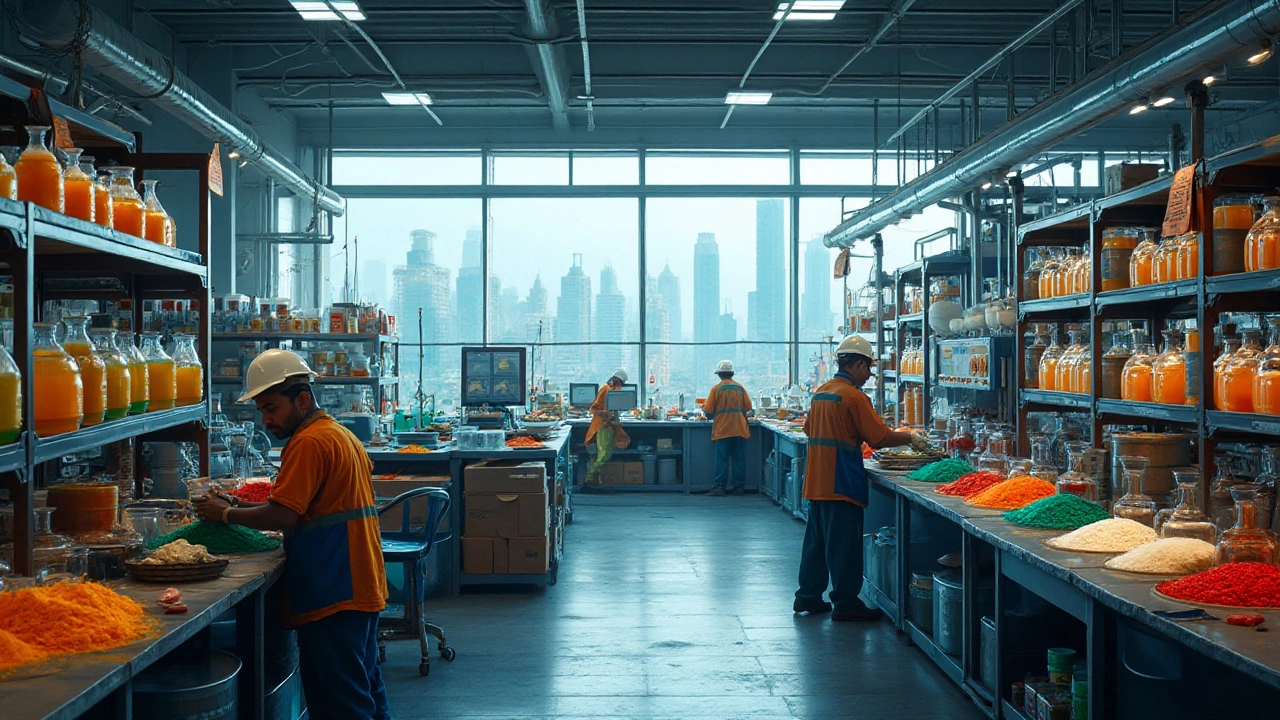Chemical Industry in India: Trends, Opportunities & Growth
If you’re looking at manufacturing in India, the chemical industry should be at the top of your list. It’s not just about large plants and heavy fumes; it’s a fast‑moving market that fuels everything from paint to pharma. Let’s break down why this sector is buzzing and how you can ride the wave.
Why the chemical sector is heating up
First off, demand is exploding. The rise of electric vehicles, renewable energy, and advanced polymers means more chemicals are needed than ever before. According to a 2024 industry report, India’s chemical output grew 8% year‑on‑year, outpacing most other manufacturing groups. That growth is powered by government incentives like the Production‑Linked Incentive (PLI) scheme, which slashes tax for companies that boost local production.
Second, the talent pool is getting better. Engineering colleges across the country now offer specialized courses in polymer science, process engineering, and green chemistry. This means factories can hire locally trained staff instead of relying on expensive overseas experts.
Key opportunities for manufacturers
One hot area is specialty chemicals. Think high‑performance adhesives, surfactants for cleaning, or additives for batteries. These products command higher margins because they’re tailored to specific applications. If you can partner with a research institute or set up a small pilot line, you can tap into niche markets without massive capital outlay.
Another growth engine is sustainable chemistry. Consumers and regulators are pushing for greener processes, so anything that reduces waste, cuts energy use, or replaces petroleum‑based feedstocks is a win. Companies that invest in bio‑based solvents or recycle‑loop technologies often qualify for extra subsidies, making the switch more affordable.
Export potential should not be ignored either. India ranks among the top five chemical exporters worldwide, with a strong foothold in the Middle East and Africa. If you can meet international quality standards—ISO 9001, REACH compliance, you’ll find ready buyers looking for cost‑effective supplies.
Finally, digital tools are reshaping production. Real‑time monitoring, predictive maintenance, and AI‑driven process optimization can shave weeks off downtime and cut raw‑material waste. Small to medium firms that adopt these technologies see profit spikes of 5‑10% within the first year.
To sum up, the chemical industry in India is a mix of high demand, supportive policies, and evolving tech. Whether you’re a newcomer eyeing specialty chemicals or an established player seeking greener processes, the market offers clear paths to growth. Keep an eye on policy updates, invest in the right talent, and leverage digital tools—you’ll be set to profit from one of India’s most dynamic manufacturing sectors.

Most Profitable Chemicals for Manufacturers in India
The chemical industry in India has grown into one of the most promising sectors due to its vast range of products and demand both domestically and internationally. This article explores which chemicals bring the most profit to manufacturers in India, taking into account factors such as production costs, demand, and market trends. It's essential for industry players to hone in on high-demand products like specialty chemicals, petrochemicals, and agrochemicals. Understanding the economic landscape and strategizing manufacturing processes can lead to significant financial gains in this ever-evolving industry.
Read More
The Most Profitable Chemical Businesses in India: A Deep Dive
In the bustling arena of India's chemical sector, identifying the most profitable businesses is key for investors and entrepreneurs alike. This article explores various segments within the industry, shedding light on which ventures hold the greatest potential for profitability. From specialty chemicals to petrochemicals, understanding market dynamics and growth opportunities can guide strategic investments. Dive into the economic trends and successful strategies that currently define India's chemical landscape.
Read More